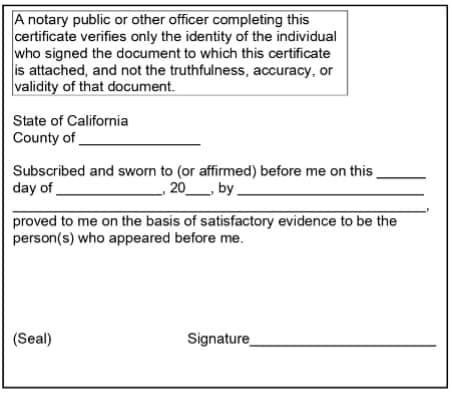Understanding Jurats: A Guide for New and Experienced Notaries
March 15, 2017 / Written by Nate Bortz Every notary public must master the completion of an airtight jurat. As one of the most important processes and documents in the notarization industry, a jurat verifies a document's content upon its affirmation.
Because the rules and regulations governing notarization are determined at the state level, each state requires specific verbiage for their jurats. Failure to faithfully adhere to this specific verbiage can render an oath invalid and even land a notary in a lawsuit.
What is a Jurat?
Also known as a notarial certificate, a jurat is an acknowledgment by the signer in the presence of a notary regarding a document's legitimacy. More specifically, it is a sworn statement that validates the statements in a document.
Because it is a very common and fundamentally essential notary process, knowing how to complete a jurat is extremely important.
The jurat is a special type of affidavit. In other words, it is a written statement of facts that is signed under oath, sworn to be true, and affirmed before a notary public or another government-approved public officer. Jurats require signers to confirm the veracity and validity of the declarations that they make in a document and agree to voluntarily sign that document under the direct observation of a notary.
Signing parties may also choose or be required to take an oral oath of affirmation or acknowledgment in conjunction with a jurat. While many people obtain jurat certification under the direct advice and/or guidance of their legal counsel, please remember that no one, not even an attorney, can take an affirmation or oath for someone else.
What Documents Typically Require a Jurat?
Although they are affidavits themselves, jurats are often attached to other affidavits that might be used as evidence in legal proceedings.
Other common legal documents that require or benefit from an attached jurat include:
- Depositions
- Sworn statements
- Court filings
How to Fill Out a Jurat
Because jurats apply directly to the statements and agreements detailed in various legal documents, they are typically included as part of those documents. However, a jurat can also take the form of a separate and distinct legal document.
Whether it stands alone or appears as a section or clause within a main document, a jurat must often be worded quite specifically to adhere to official state laws and regulations.
In California, for example, jurats need to include a disclaimer at the top to be valid. And in Florida, notaries must specify whether the signer is in-person or online.
If local laws aren't followed, the jurat may fail to adequately prove the accuracy of a signer's statements and thereby invalidate the documents.
Therefore, neither the supreme importance of the jurat nor the essential role of the notary can be overestimated when making any legally binding declaration or agreement.
Each time that a notary executes and certifies a jurat, they must confirm and authenticate these four things:
- Presence — All signers must sign the document while physically in the same room as the notary.
- Identity — The notary must confirm all signers' identities according to state regulations.
- Signature — The notary must directly witness all signatures as they are applied to the document.
- Oath — The notary must swear to the validity of the document's contents using the appropriate words.
In terms of document paperwork, the notary must identify and prepare the jurat, witness all signatures, and then apply their official stamp or seal.
When completed, this paperwork will serve as an official confirmation that the specified information contained in the document is truthful and accurate.
In some cases, notaries may augment this paperwork by administering an affirmation or acknowledgment oath to signers. After the signing session, notaries may need to make copies of documents for a signer's personal records.
They must also keep their own records up to date, documenting the jurat in an official notary journal as recommended by best industry practices or required by state regulations.
About the Signer's Acknowledgment Oath
While most states do not require it, having the signer lift his or her right hand and repeat an acknowledgment oath is a simple practice that a notary can employ.
Signers can swear or affirm that the document's contents are true and valid. This helps the signer realize the seriousness of the situation and the potential implications of their actions.
Remember that the signer should have two options: they can either take an oath to a deity or make an affirmation on their personal honor.
Stay Compliant with Accurate Jurats
Aspiring notaries public must have a firm command of jurat processes and paperwork before they can confidently enter the profession. Active notaries owe it to themselves and their clients to optimize and refine their jurat work.
There is no better way to position yourself for success and keep yourself out of trouble as a notary.
